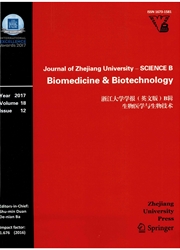

 中文摘要:
中文摘要:
目的:评估新型口服抗凝药物在心房颤动患者中胃肠道出血和颅内出血的风险。创新点:首次用网络meta分析的方法评估新型口服抗凝血剂在心房颤动患者中胃肠道出血和颅内出血的风险。方法:我们搜集了20个随机控制试验共91 671位使用抗凝、抗血小板药物或安慰剂的房颤患者。采用贝叶斯网络meta分析,使用马尔可夫链蒙特卡罗方法模拟了比值比(OR)和95%置信区间(CI)。结论:通过与贝叶斯模型的间接比较证实,阿司匹林+氯吡格雷相比安慰剂大大增加房颤患者胃肠道出血的风险(OR 0.33,95%CI 0.01-0.92)。华法林与新型口服抗凝药物相比,大大增加了颅内出血风险,其中与依度沙班30 mg相比OR 3.42,95%CI 1.22-7.24,与达比加群11 mg相比OR 3.56,95%CI 1.10-8.45。我们进一步排名发现胃肠道出血风险最低的新型口服抗凝血剂是阿哌沙班5 mg,颅内出血最低的是阿哌沙班5 mg、达比加群110 mg和依度沙班30 mg。
 英文摘要:
英文摘要:
Background: Antithrombotic therapy using new oral anticoagulants (NOACs) in patients with atrial fibril- lation (AF) has been generally shown to have a favorable risk-benefit profile. Since there has been dispute about the risks of gastrointestinal bleeding (GIB) and intracranial hemorrhage (ICH), we sought to conduct a systematic review and network meta-analysis using Bayesian inference to analyze the risks of GIB and ICH in AF patients taking NOACs. Methods: We analyzed data from 20 randomized controlled trials of 91 671 AF patients receiving anticoagulants, antiplatelet drugs, or placebo. Bayesian network meta-analysis of two different evidence networks was performed using a binomial likelihood model, based on a network in which different agents (and doses) were treated as separate nodes. Odds ratios (ORs) and 95% confidence intervals (CIs) were modeled using Markov chain Monte Carlo methods Results: Indirect comparisons with the Bayesian model confirmed that aspirin+clopidogrel significantly increased the risk of GIB in AF patients compared to the placebo (OR 0.33, 95% CI 0.01-0.92). Warfarin was identified as greatly increasing the risk of ICH compared to edoxaban 30 mg (OR 3.42, 95% CI 1.22-7.24) and dabigatran 110 mg (OR 3.56, 95% CI 1.10-8.45). We further ranked the NOACs for the lowest risk of GIB (apixaban 5 mg) and ICH (apixaban 5 mg, dabigatran 110 mg, and edoxaban 30 mg). Conclusions: Bayesian network meta-analysis of treatment of nonvalvular AF patients with anticoagulants suggested that NOACs do not increase risks of GIB and/or ICH, compared to each other.
 同期刊论文项目
同期刊论文项目
 同项目期刊论文
同项目期刊论文
 期刊信息
期刊信息
